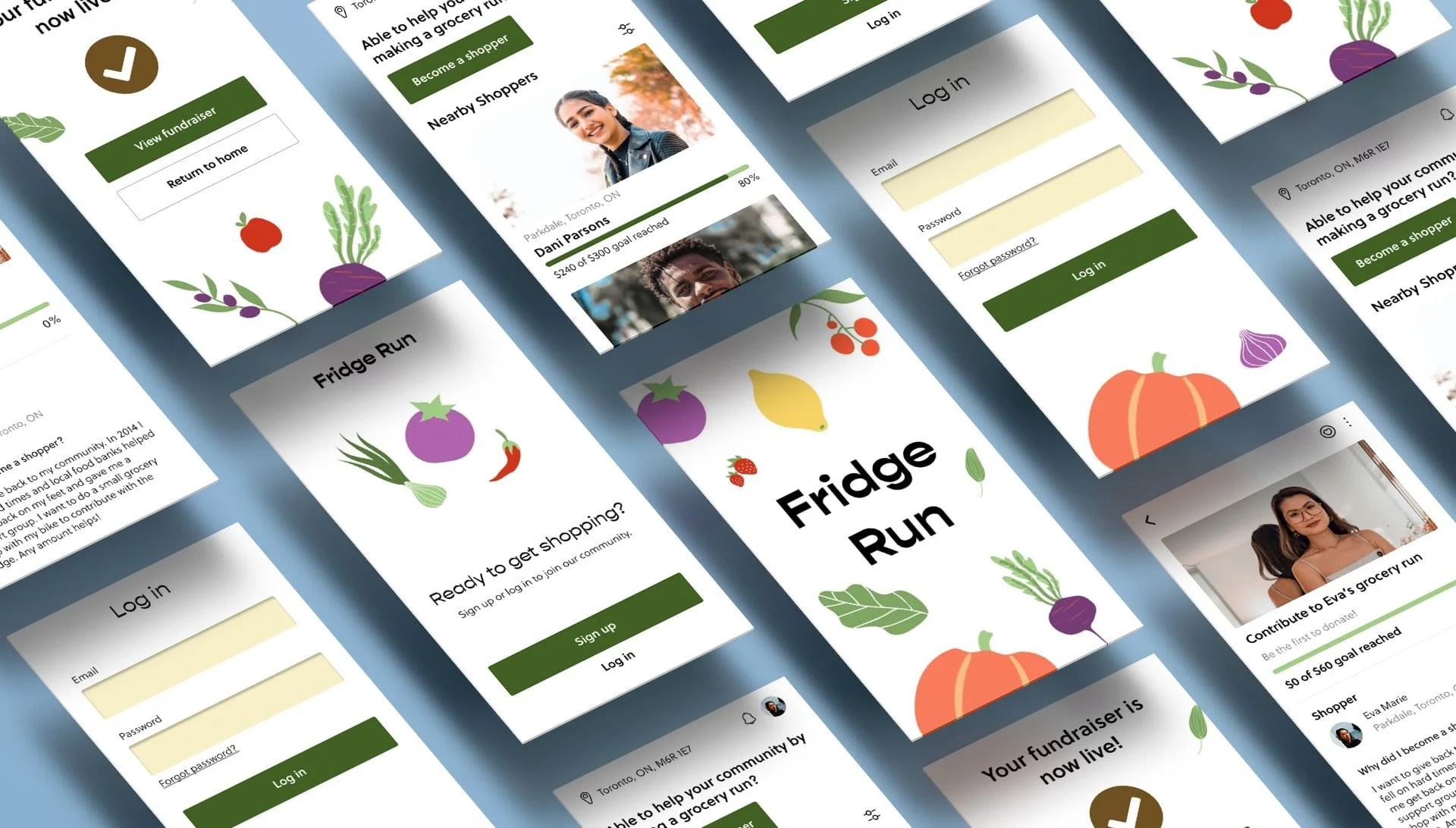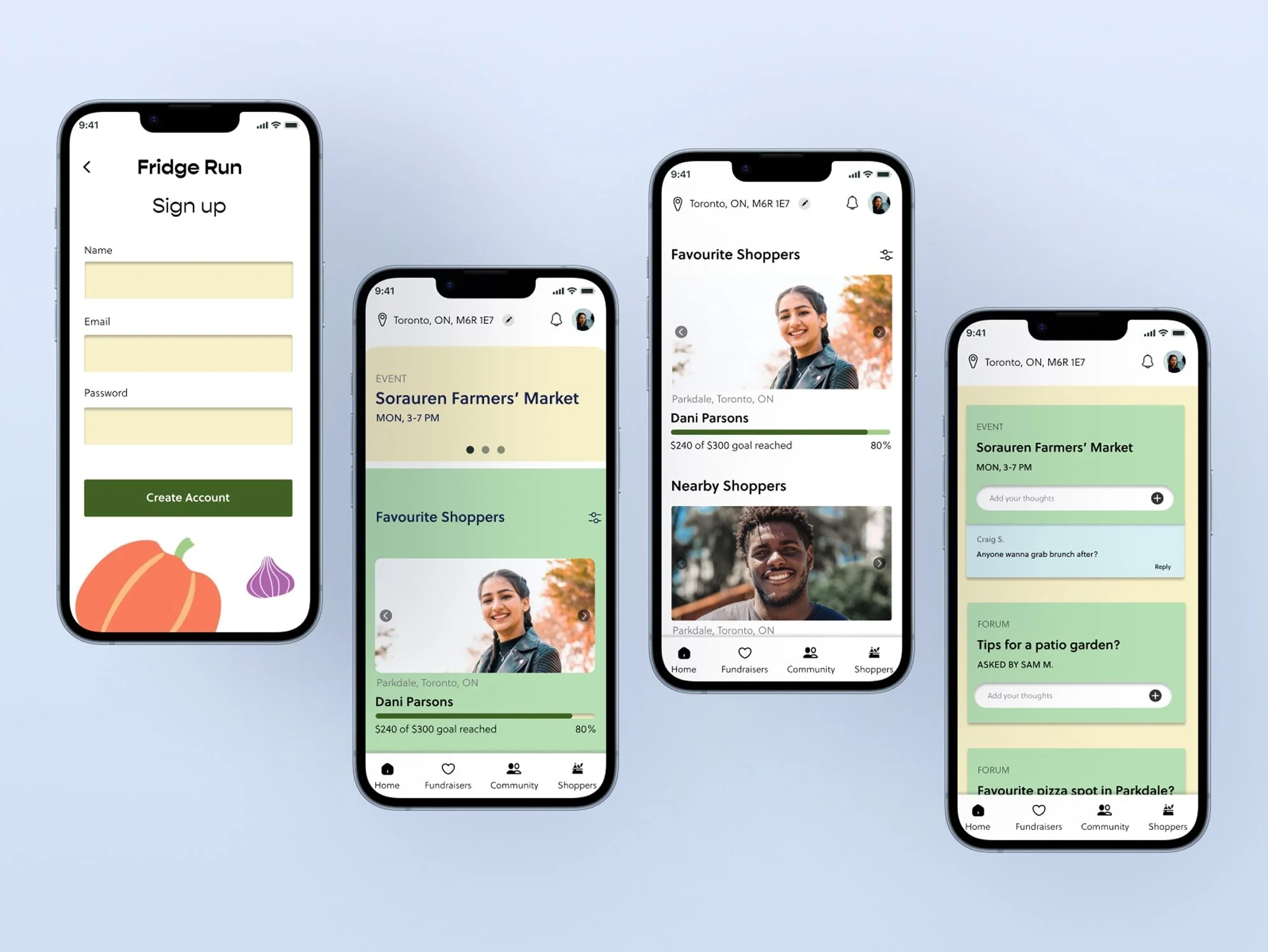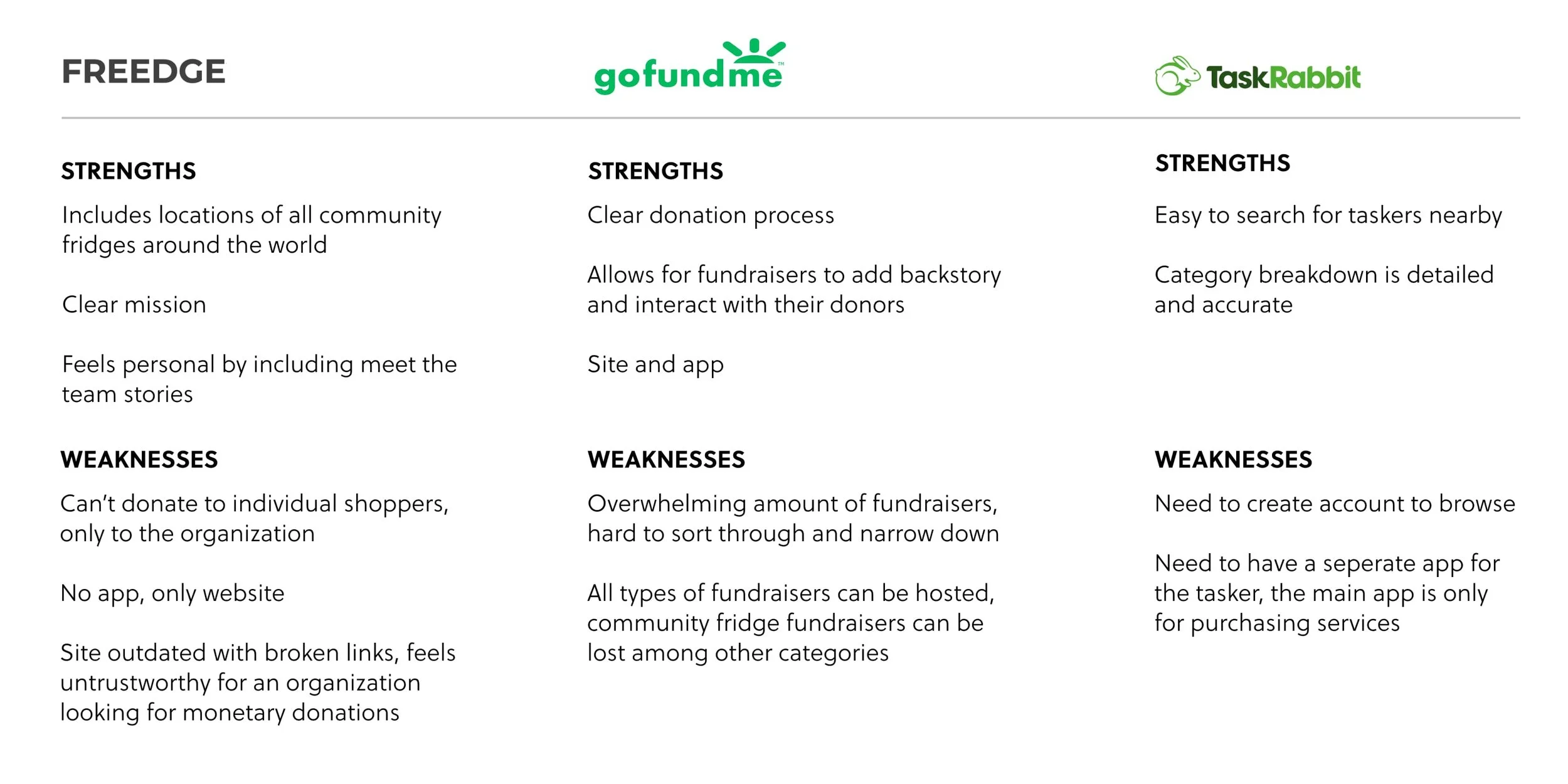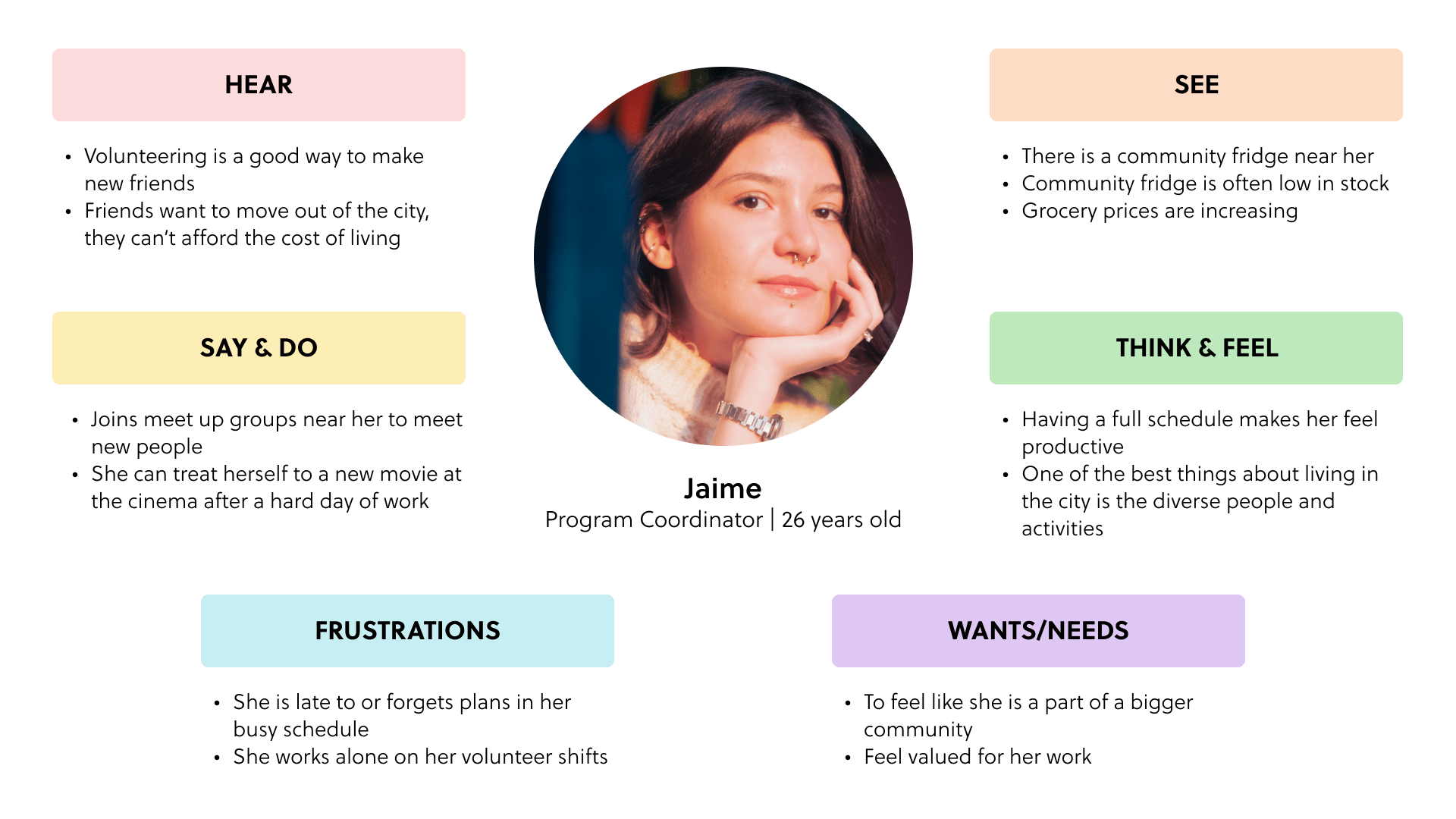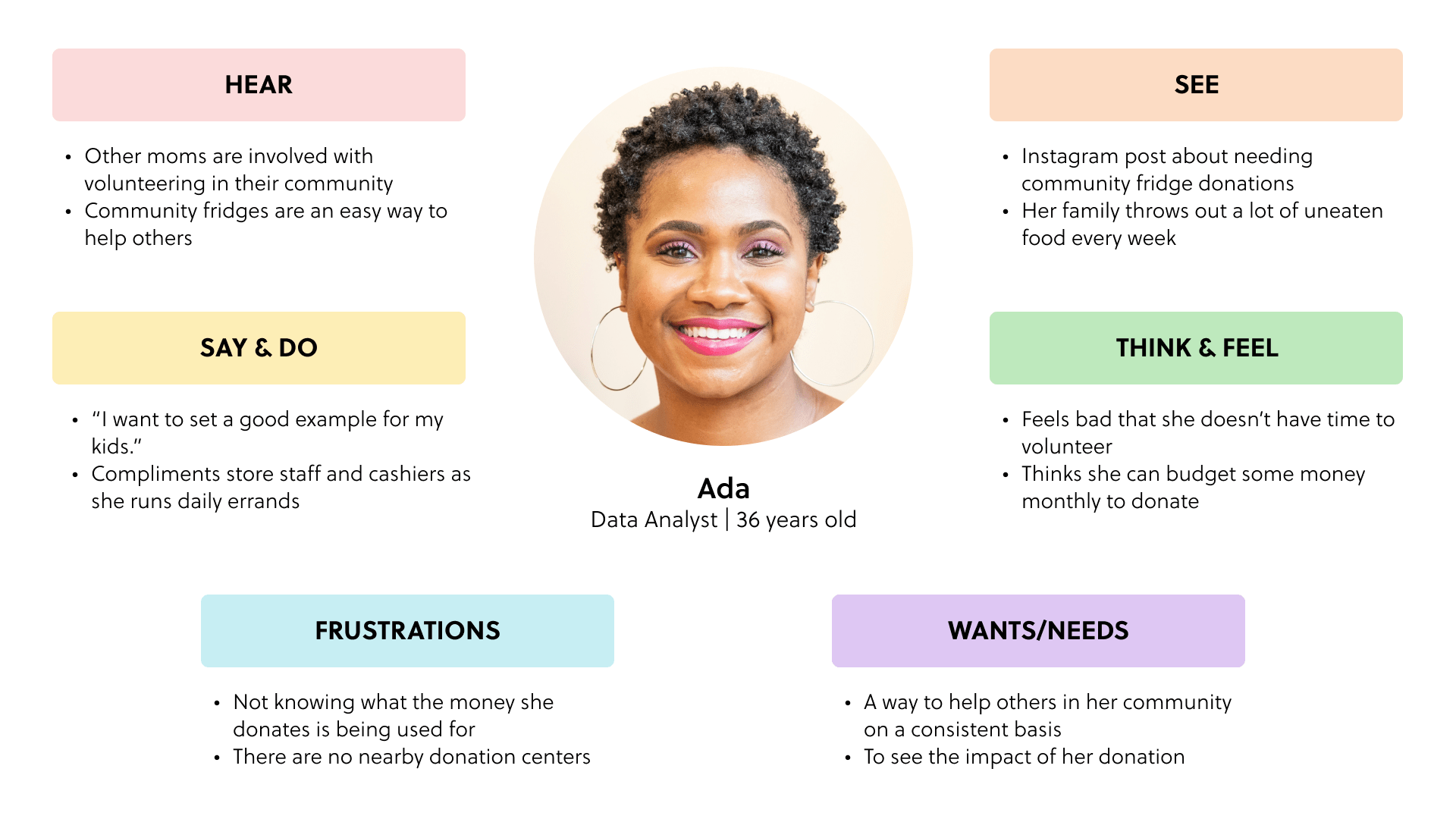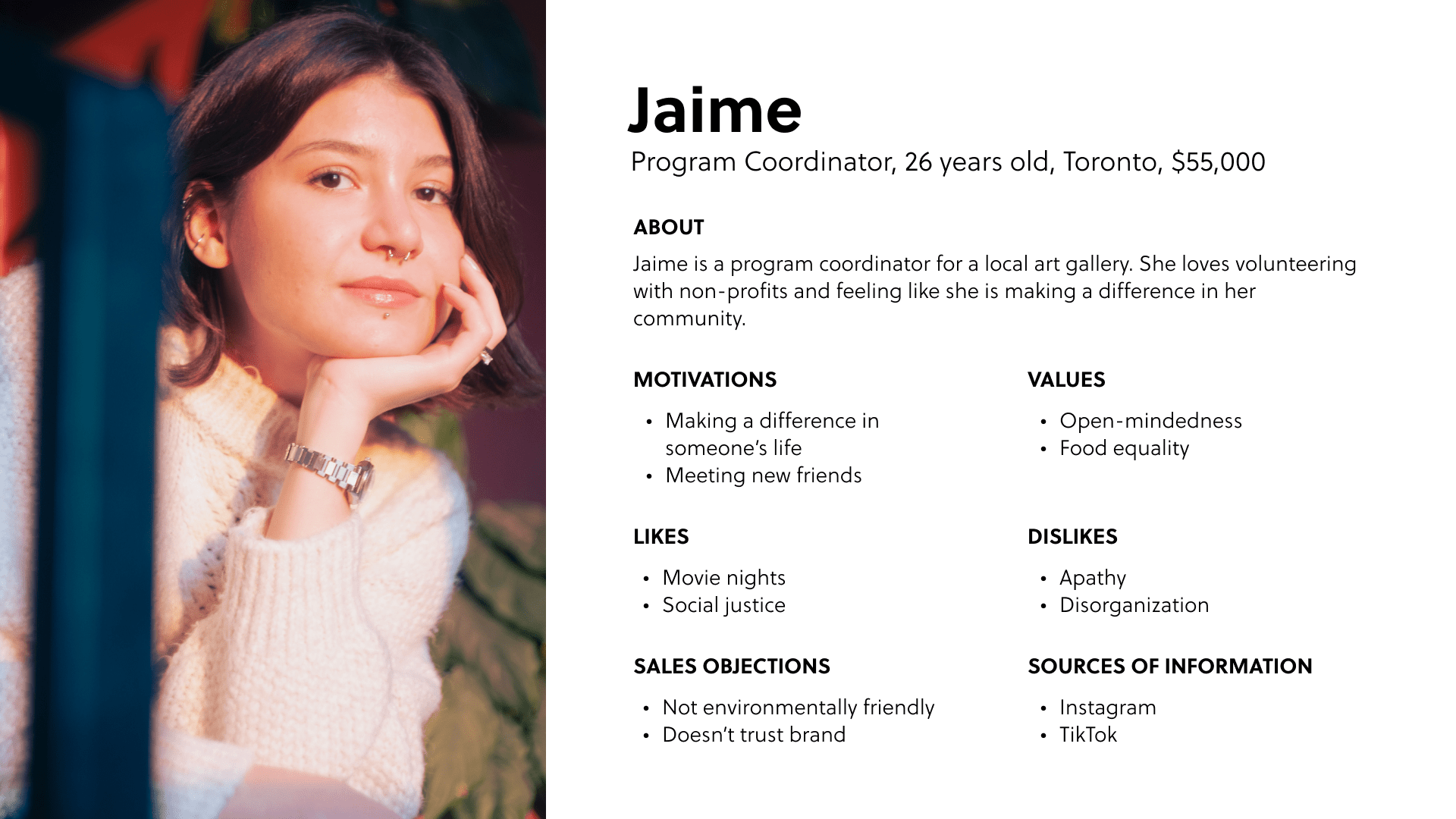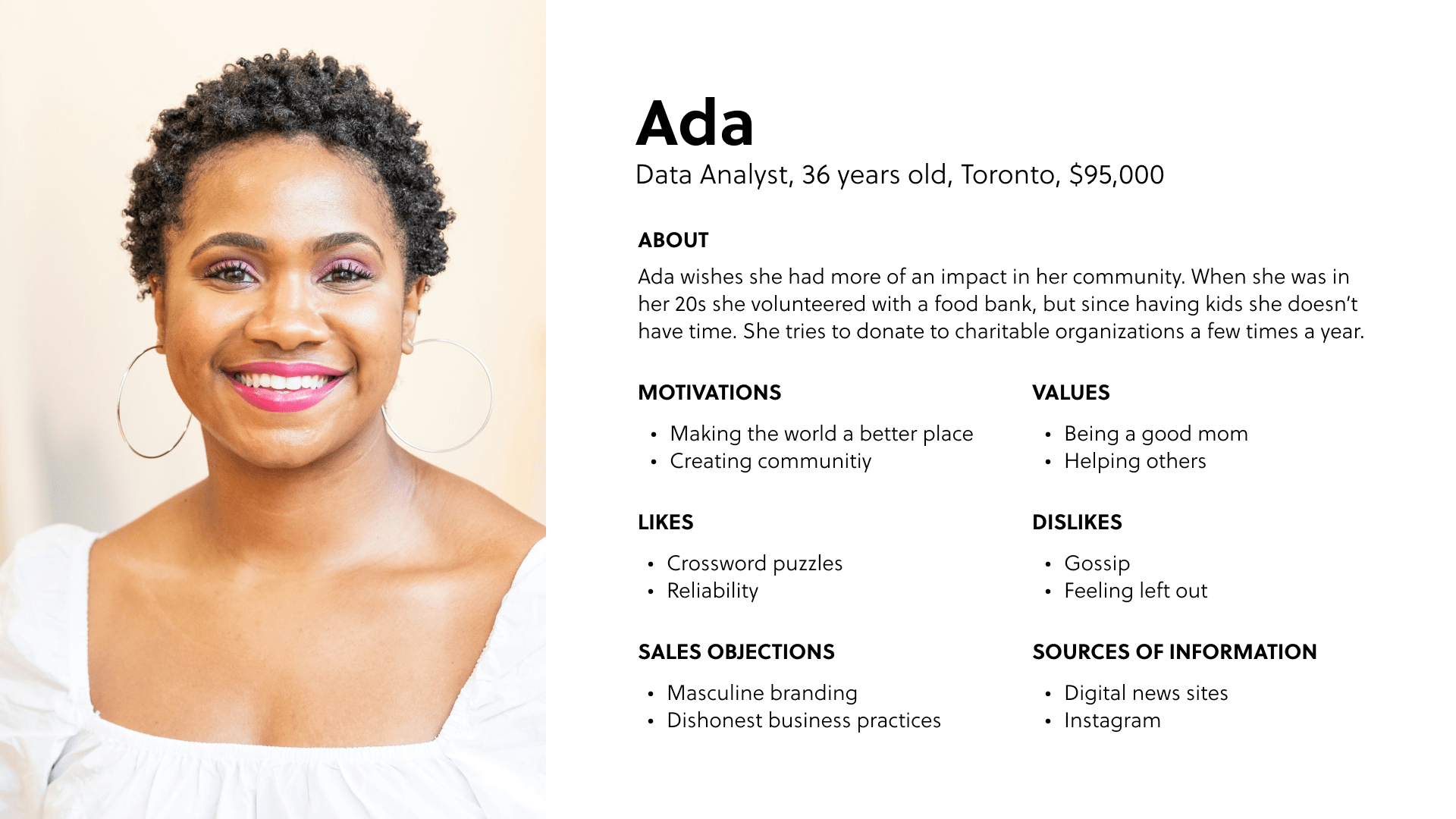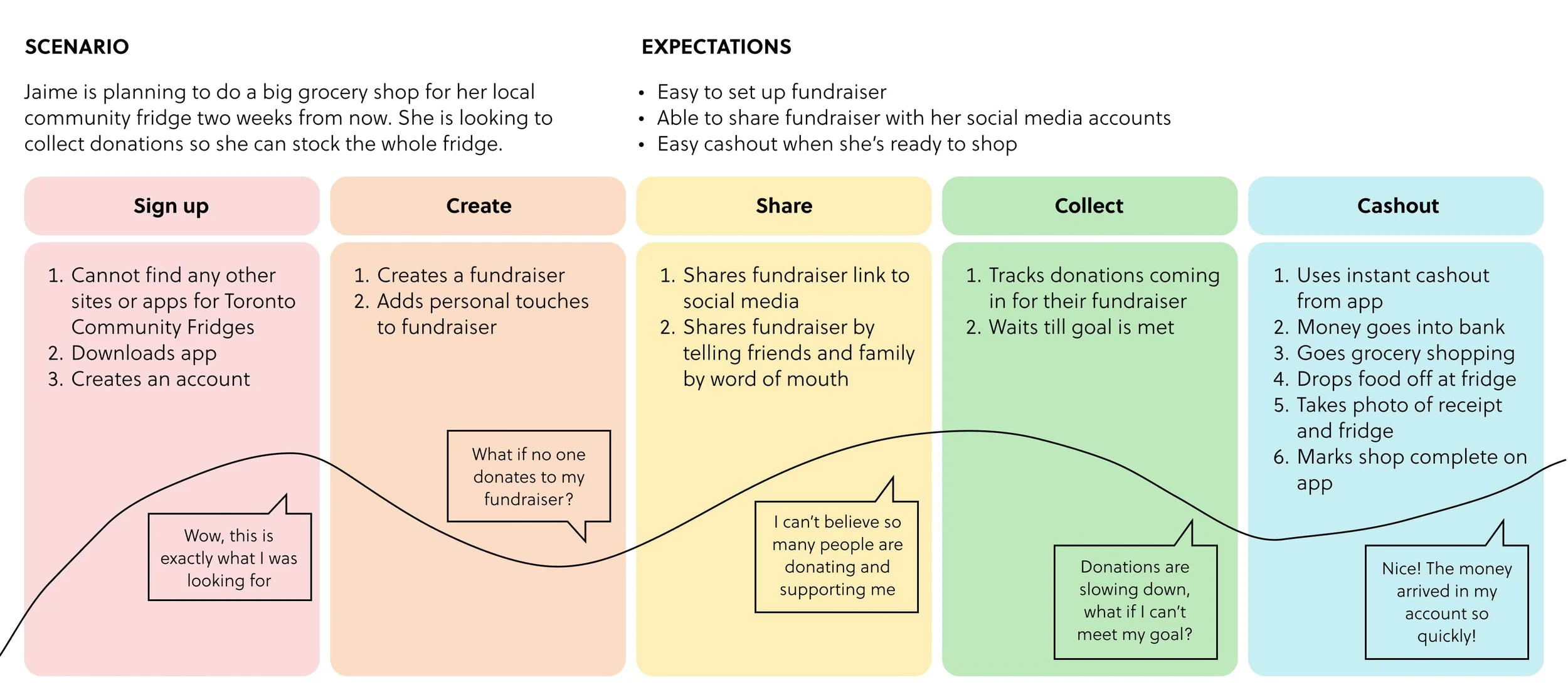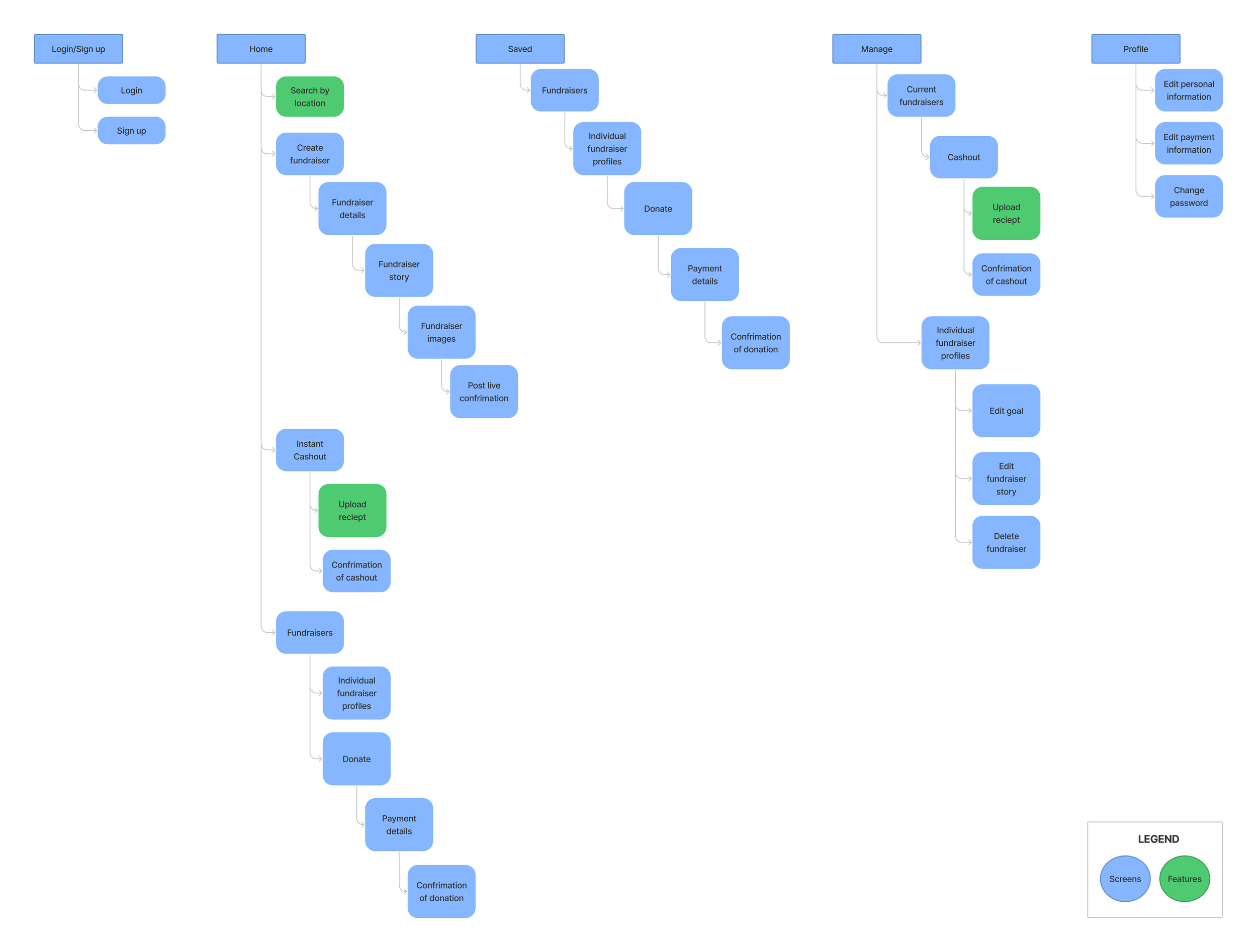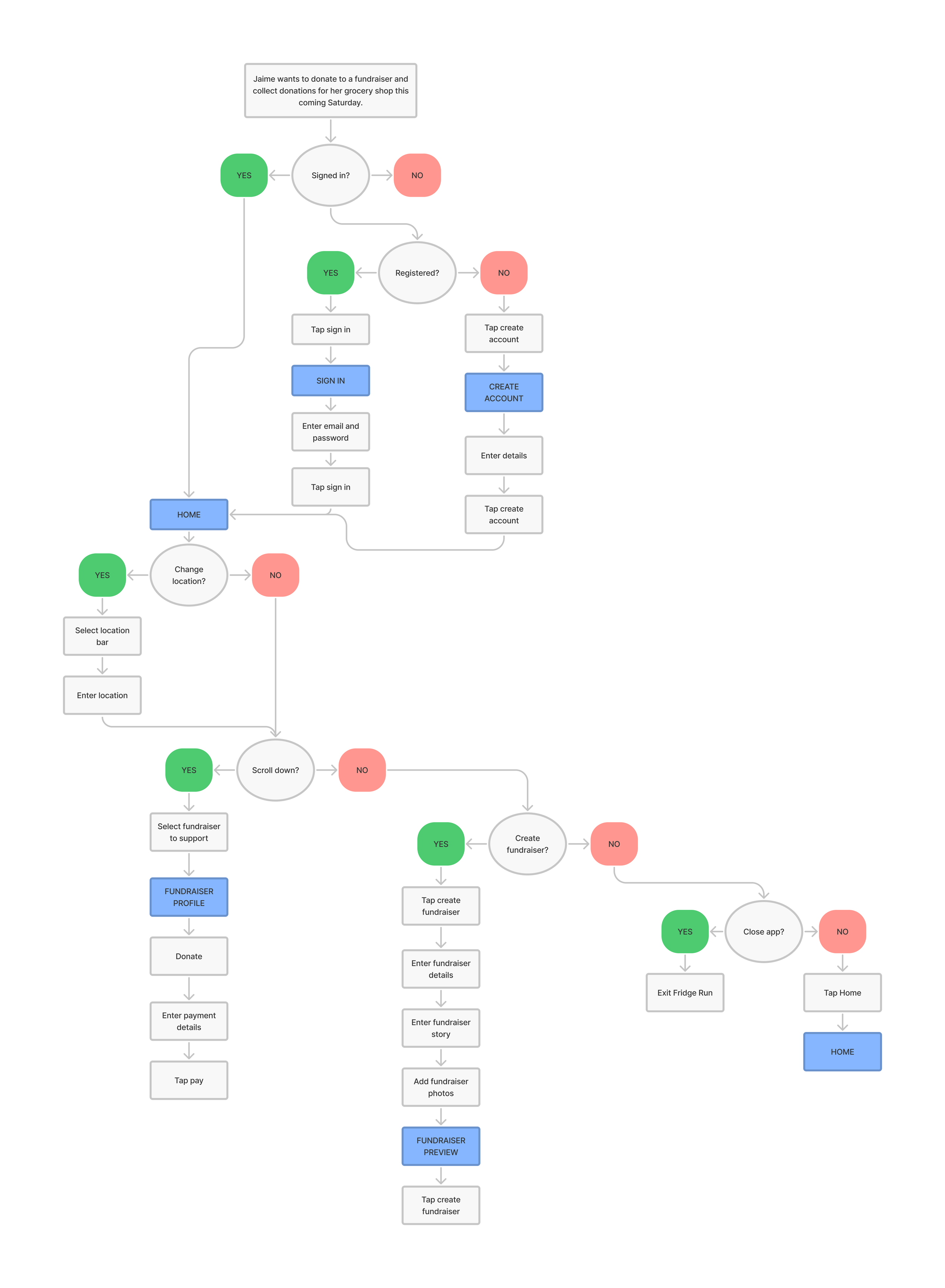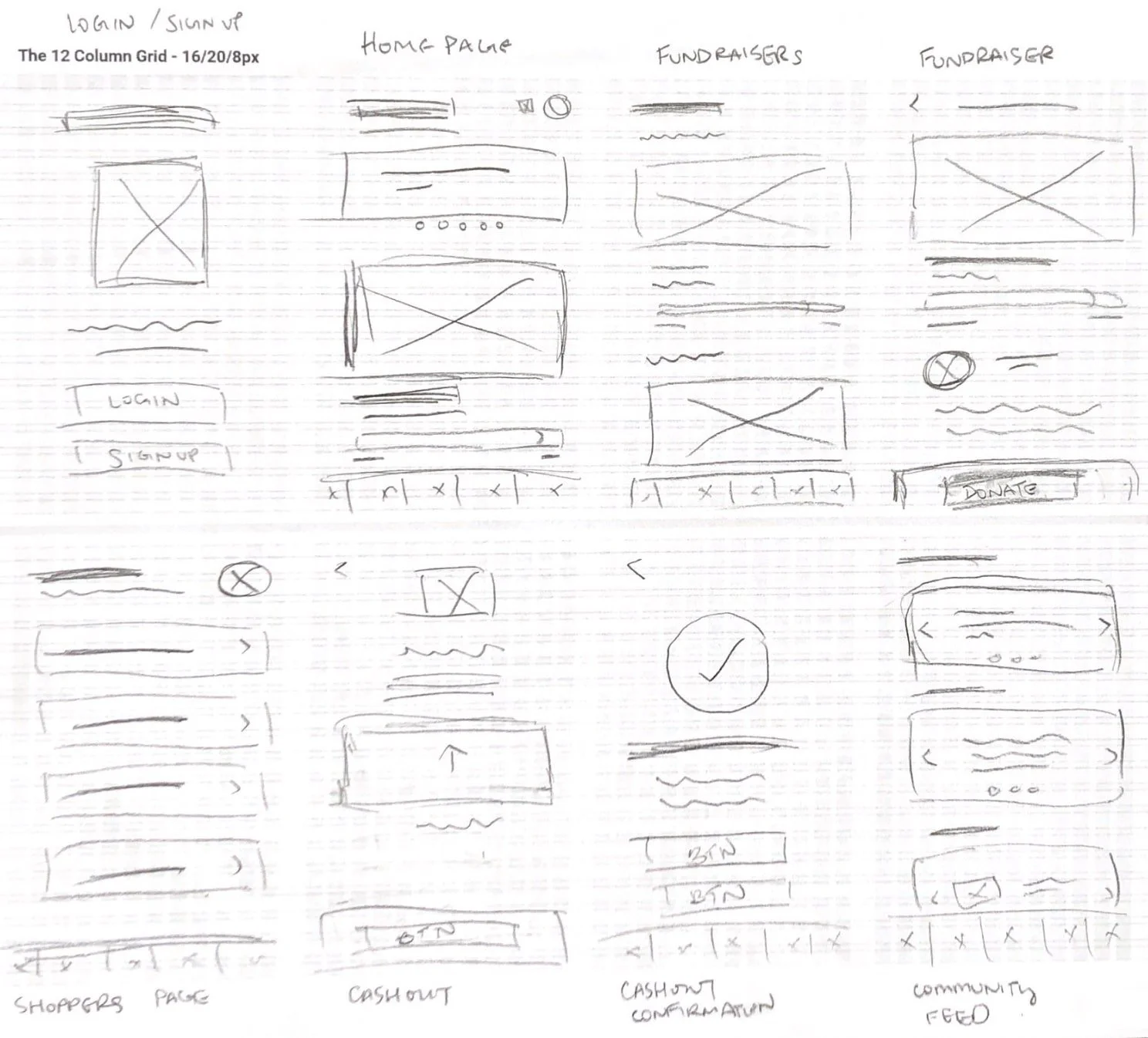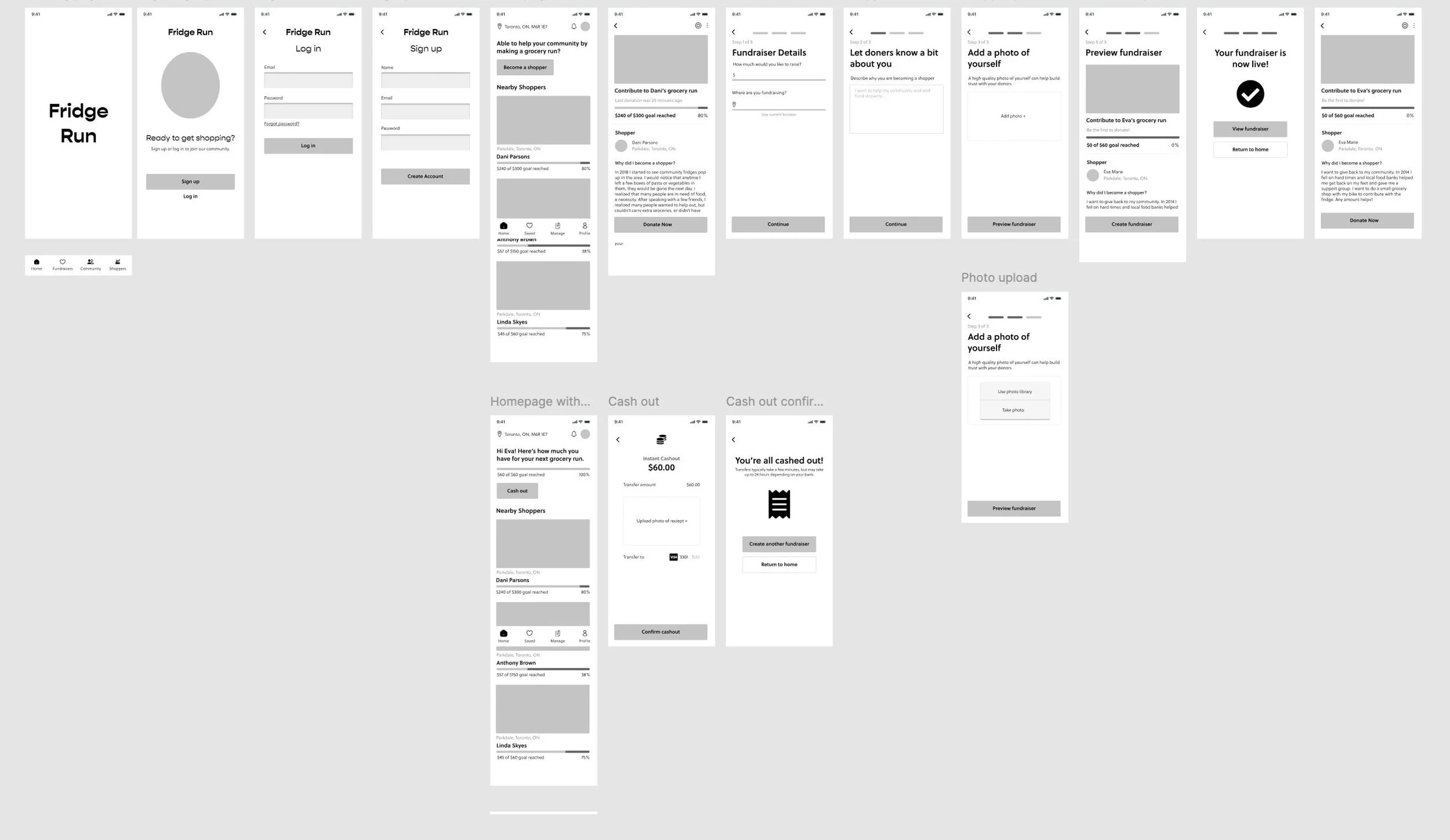Fridge Run
With the rise of community fridges around Toronto, I began to see friends on instagram ask for monetary donations for grocery shops to fill the fridges. I wanted to created an app that would connect those who are able to shop for groceries to fill the fridges, and those who are not able to shop, but would still like to contribute to their community fridge.
The UX Process
To begin, I took to google to learn more about food disparity and the need for community fridges and the impact they can have in the community. The goal of this research was to learn if there was a market need for an app that could go hand in hand with community fridges, as well as if people were looking for a way to contribute to the fridges through monetary donations. I focused on Canadian based data.
I was able to gain the following insights:
Food insecurity is on the rise
In 2024, 1 in 7 (14%) people accessed food banks more than once
Food costs are expected to rise by 5% to 7% in 2025
Community Fridges are accessed daily
In Calgary, a fridge is accessed 100 times a day, clearing it out 5 times per day
In Toronto, fridges are cleared out within half an hour of a restock
In Regina, a fridge goes through $6000 of groceries per week
Competitive Analysis
After learning more about the rise of food insecurity and the importance of community fridges, I conducted a competitive analysis. I quickly learned that there was nothing like an app that connected shoppers and those looking to donate money for the community fridges in existence.
I was able to analyze Freedge, Go Fund Me, and Task Rabbit, as indirect competitors as they all provide a platform for services and individuals to connect.
User Research
I conducted user interviews to further understand the needs and wants of the users. I spoke to 5 individuals who had been using Instagram or Facebook to ask their community for donations towards their shop for the community fridge.
“I had a car and a grocery store across the street from me. I already had a large instagram following due to my job, so I thought why not reach out and see what donations I could bring in. I’ve now been doing this for almost 6 months, every week, and every time I get about $100 - $300 of donations. I always post my receipt after each shop for transparency.”
–Interviewee 1
Persona & Empathy Maps
Distilling patterns and similarities in information from my user interviews, I created two personas and empathy maps.
Journey Map
Taking what I know from the user interviews, personas, and empathy maps, I created a journey map to visualize the process the users will go through to accomplish the task of collecting donations for their grocery shop.
Application Map
To begin mapping out the architecture of the Fridge Run app, I created an application map to work out how best to organize the screens for the users.
User Flows
I wanted to dive deeper and understand the overall journey a user could take on the app. I used a user flow to see the decision making process of the users.
Low Fidelity Sketches
Using my understanding of the user’s journey using the app, and architecture of the app, I began to rough out sketches of the app. This allowed me to make quick adjustments and tweaks before moving into the mid-fidelity wireframes.
Mid-Fidelity Wirefames & User Testing
I created mid-fidelity wireframes with Figma and set up a prototype of the key frames that I could then use to test with users.
Through testing, I was able to discover that users preferred having a separate notifications system, rather than having to go through the profile. I also found users wanted a way to see what had been “hearted”, and have the ability to “heart” from the homepage, rather than having to go to the “saved” page.
Style Guide
Moving on to the UI of the app, I created a style guide to refer to as I created my high fidelity wireframes. The direction of this app was to keep it professional, while still playful and unique.

